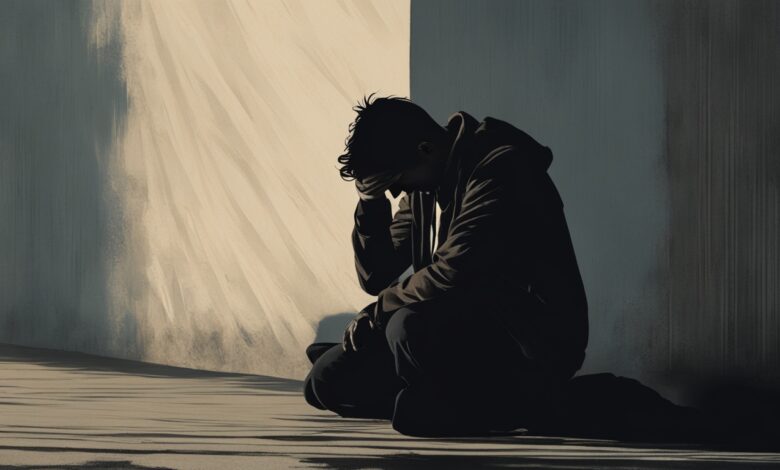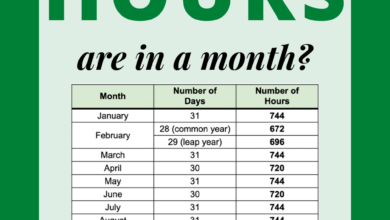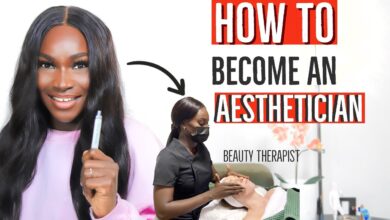Coping with Sub Drop: Understanding and Recovery

Sub drop is a crucial aspect of the BDSM lifestyle. It’s the emotional and physical aftermath experienced by submissives after intense power exchange. This article explores sub drop, its causes, and strategies for prevention and recovery.
We’ll examine the biochemical factors, physical symptoms, and psychological effects of sub drop. This knowledge will help you manage this common yet misunderstood phenomenon more effectively.
Sub drop can be an emotional rollercoaster. It often leaves submissives feeling vulnerable and depleted. This guide will help both new and experienced practitioners navigate these challenges with greater awareness.
Key Takeaways
- Sub drop is a common experience for submissives, characterized by emotional and physical symptoms that can last for hours to weeks.
- Understanding the biochemical factors and hormonal fluctuations behind sub drop is crucial for effective coping and recovery.
- Recognizing the physical and emotional symptoms of sub drop can help individuals and their partners prepare for and manage this vulnerable state.
- Sub drop is believed to be more prevalent in long-term BDSM relationships, highlighting the importance of communication and aftercare.
- Employing self-care strategies and seeking professional support can greatly aid in the recovery process for those experiencing persistent or severe sub drop.
What is Sub Drop?
Sub drop is a term in BDSM communities. It describes the emotional and physical low after intense scenes. Symptoms can include emotional volatility, exhaustion, depression, anxiety, and confusion.
Definition and Overview
Sub drop is a natural response to hormone changes after BDSM experiences. It can occur moments, hours, or days after a session. The body typically clears endorphins within 30 minutes post-scene.
Proper hydration is crucial after BDSM play. Drink several glasses of water in the hours following a scene. Extended Sub-Drop recovery times can vary, wherein some Subs may need as long as an hour to fully regain composure post-intense BDSM scene.
Recognizing sub drop is important for submissives. Some Subs / Bottoms might experience emotional or psychological shifts leading to hours or even days of feeling abnormal after a scene.
“Sub drop can occur in anyone who experiences an intense scene or session within the BDSM lifestyle. The onset of sub drop can happen anywhere from one to 48 hours post-session, with effects lasting up to two weeks.”
Causes of Sub Drop
Sub drop occurs after intense BDSM experiences. It’s caused by complex biochemical factors. During these scenes, the body releases “feel-good” hormones, creating a euphoric state called subspace.
As the scene ends, the body adjusts to hormone levels dropping. This leads to a physical and emotional low. The sudden decrease in stress hormones also contributes to sub drop symptoms.
Biochemical Factors
Several biochemical factors play a role in sub drop:
- Endorphin Withdrawal: BDSM scenes release endorphins, causing euphoria and pain relief. When endorphin levels drop, physical and emotional discomfort can follow.
- Dopamine Depletion: Dopamine spikes during BDSM activities. As it depletes, feelings of lethargy and depression may occur.
- Cortisol and Adrenaline Withdrawal: Stress hormones help the body cope during intense experiences. Their decline can disrupt the body’s balance, contributing to sub drop symptoms.
Knowing these biochemical processes helps submissives prepare for intense experiences. It can lead to better management of sub drop. This knowledge ensures an easier transition back to daily life.
Physical Symptoms of Sub Drop
Intense BDSM activities can trigger “sub drop,” causing various physical symptoms. The body tries to restore balance after the intense responses during a scene or submission period.
Common physical symptoms of sub drop include:
- Fatigue and exhaustion
- Aches and pains throughout the body
- Stomach issues, such as nausea or gastrointestinal discomfort
- Cold extremities, such as hands and feet
- Headaches
- Cravings for sugary foods, as the body seeks to replenish depleted endorphin and dopamine levels
- General malaise and feelings of illness
These physical symptoms of sub drop can vary from mild discomfort to severe debilitation. The severity depends on the individual and the intensity of the BDSM activity.
Recognizing and addressing these physical effects is crucial for submissives. It helps them recover effectively and maintain their overall well-being.
| Physical Symptom | Description | Potential Causes |
|---|---|---|
| Fatigue | Overwhelming feelings of tiredness and a lack of energy | Depletion of endorphins and dopamine during intense BDSM play |
| Aches and Pains | Muscle soreness, joint pain, and general bodily discomfort | Physical exertion and stress on the body during BDSM activities |
| Stomach Issues | Nausea, gastrointestinal distress, and loss of appetite | Stress response and disruption of the digestive system |
| Cold Extremities | Hands, feet, and other body parts feeling unusually cold | Disruption of the body’s temperature regulation and blood flow |
| Headaches | Tension headaches, migraines, or other types of head pain | Hormonal fluctuations and stress on the body |
| Cravings | Intense desires for sugary or comfort foods | The body’s attempt to replenish depleted neurotransmitters and hormones |
| Malaise | General feelings of illness, discomfort, and lack of well-being | Combination of physical and emotional effects of sub drop |
Understanding sub drop physical effects and their causes helps submissives recognize and address these symptoms. This knowledge paves the way for effective recovery and improved overall well-being.
Emotional Symptoms of Sub Drop
Sub drop can deeply affect a submissive’s emotional state. They may feel sad, anxious, or depressed. Confusion, guilt, and shame are also common experiences.
The shift from subspace highs to sub drop lows can be disorienting. It may lead to feelings of loneliness and self-doubt. Sudden emotional outbursts can occur, even after rest.
Sub drop can cause a depressive state with irrational behavior. This might include pushing away loved ones or craving attention. Public play may worsen sub drop due to limited aftercare.
All BDSM participants can experience sub drop. Neglecting aftercare can be dangerous for the submissive’s well-being and safety.
The Importance of Aftercare
Consistent aftercare is crucial in managing sub drop. It involves patience, affection, and care from the Dominant. This strengthens the bond between partners.
Submissives need to know their Dominant cares for them. Support during sub drop episodes is vital. Mutual trust and understanding are key to a positive experience.
| Common Symptoms of Sub Drop | Recommendations to Reduce Sub Drop |
|---|---|
|
|
Understanding sub drop’s emotional aspects helps submissives navigate this challenge. Self-compassion and support are crucial. These can strengthen the bond with their Dominant partners.
Sub Drop in Long-Term Relationships
Sub drop can be tough for submissives in committed relationships. The deep emotional bond can make the submissive experience more intense. This leads to a stronger drop when the scene ends.
Separated submissives may face bigger challenges. Distance or life commitments can make it hard to maintain their submissive headspace. They might struggle with feelings of loss and longing.
Recovery requires extra communication and understanding. Creative strategies are needed to support submissives during this vulnerable time. Sub drop can cause emotional disconnection, ghosting, and poor communication in various relationships.
Self-care is crucial for recovery. Yoga, meditation, and nature walks can help rebuild energy levels. Staying hydrated is also important. Effective communication is key to preventing negative consequences related to sub drop.
| Symptom | Duration |
|---|---|
| Sub drop symptoms | Typically set in within 24-72 hours after an intense scene in a D/s relationship |
| Recovery from sub drop | Can take roughly 18 hours, indicating the time it may take for a submissive to stabilize emotionally |
Sub drop can trigger various emotional and psychological effects. These may include feelings of guilt, worthlessness, and hopelessness. Loss of interest in activities, including sex, is also common.
Dealing with sub drop requires empathy and creative support strategies. Open communication and commitment to aftercare are essential. These efforts can help couples overcome challenges and strengthen their bond.
sub drop
Sub drop can be tough, but submissives can take steps to prevent or lessen its effects. Proper preparation is key before intense BDSM scenes. This includes eating well, staying hydrated, and warming up with light exercise.
Being aware of your emotional state helps identify when sub drop might occur. Recognizing triggers and early signs allows submissives to use coping strategies effectively.
Coping Strategies for Sub Drop
- Engage in self-care activities such as taking a warm bath, indulging in comforting foods, or participating in relaxing hobbies.
- Seek support from trusted partners, friends, or mental health professionals to navigate the emotional and psychological aspects of sub drop.
- Avoid potentially harmful coping mechanisms like self-harm, and instead focus on positive strategies to manage the drop.
- Practice mindfulness and engage in activities that promote emotional regulation, such as meditation or deep breathing exercises.
- Maintain open communication with partners about the sub drop experience and any needs for additional aftercare or support.
Understanding sub drop’s causes and symptoms is crucial for submissives. Implementing effective prevention and coping strategies helps navigate this challenging experience. With these tools, submissives can build resilience and practice better self-care.

“The intensity of the scene plays a significant factor in the severity of the drop experienced by submissives. There is no specific time frame for when sub drop may occur, it can happen immediately after a scene or even days later.”
The Importance of Aftercare
Aftercare is vital for submissives after intense BDSM scenes. It helps prevent sub drop and includes physical comfort and emotional support. Dominants must ensure their submissives receive proper care during this vulnerable time.
Sub drop can occur 24-72 hours after a scene, causing various negative symptoms. These include concentration issues, fatigue, guilt, insomnia, and irritability. Failing to practice aftercare could result in a disconnect between Dom and sub, potentially damaging the relationship.
Aftercare should continue with check-ins after a scene and in the following days. Subs should keep an aftercare kit with essentials like snacks, water, and comfort items.
Partners must communicate about aftercare to ensure everyone’s well-being and address potential sub drop feelings. This helps maintain a healthy BDSM relationship.
“Aftercare is what a submissive partner requires to feel safe, appreciated, and comforted after undergoing an intense scene.” – Jessica Renae
Submissives should also communicate their aftercare needs and practice self-care. Clear aftercare protocols and open communication help subs transition back to everyday life.
Good aftercare can help prevent sub drop through activities like talking, massages, and cuddling. Partners should discuss aftercare plans before scenes, even in long-term relationships.
Including aftercare in pre-adventure discussions ensures both partners are prepared and comfortable. This practice strengthens trust and enhances the overall BDSM experience.
Self-Care for Sub Drop Recovery
Submissives can empower themselves during sub drop by using self-care practices. These strategies can aid recovery and provide comfort during this transitional period.
Tips and Techniques for Sub Drop Recovery
Submissives experiencing sub drop may find relief in these self-care techniques:
- Indulging in a warm, soothing bath to promote relaxation and physical rejuvenation
- Savoring comfort foods or beverages that provide a sense of nourishment and nostalgia
- Practicing mindfulness exercises, such as meditation or deep breathing, to manage emotional fluctuations
- Engaging in gentle physical activities, like light stretching or walking, to boost energy levels
- Surrounding oneself with familiar and comforting items, like soft blankets or favorite stuffed animals
- Exploring expressive outlets, such as journaling or art, to process thoughts and feelings
Adding these self-care for sub drop practices to daily routines can help submissives recover. They can take an active role in their transition and feel more empowered.

Listening to your body and emotions is crucial during self-care for sub drop. Be patient and compassionate with yourself throughout the process.
With the right techniques for sub drop, submissives can navigate recovery more easily. These practices can help build resilience and promote healing.
Communicating with Partners
Open and honest communication with partners is vital when dealing with sub drop. Submissives should feel free to share their needs and fears. This helps partners understand and support them better during this sensitive time.
Dominants should create a safe space for submissives to express themselves. They can work together to prevent and manage sub drop. Clear, non-judgmental talks build trust and understanding between partners.
Effective communication with partners about sub drop is key to a fulfilling BDSM relationship. Open talks help partners understand each other’s needs better. They can work together to ensure a positive experience, even during tough times.
“Clear communication is the foundation of any healthy relationship, and it’s especially important when navigating the complexities of sub drop.”
Strategies for Effective Communication
- Pick the right moment to have meaningful conversations about sub drop.
- Approach the discussion with a positive and understanding mindset.
- Keep the conversation brief and focused on specific needs and concerns.
- Take responsibility for your own feelings and avoid accusatory language.
- Create a safe and judgment-free environment for open dialogue.
Seeking help from a relationship counselor can be valuable. They can guide couples through sub drop and communication challenges. Remember, professional support is always an option.
Seeking Professional Support
Seeking professional support is crucial when dealing with sub drop challenges. Mental health experts can provide invaluable guidance for your well-being. Self-care and partner support are important, but sometimes professional help is necessary.
Submissives with persistent or severe sub drop may benefit from therapy. A therapist can offer strategies for managing emotional and psychological aspects. They can also address underlying issues contributing to the submissive’s struggles.
Medical professionals can rule out physical factors or treat physical symptoms. They’re a valuable resource for navigating the complexities of sub drop. Prioritizing mental health support is essential for submissives experiencing this phenomenon.
Support groups, both in-person and online, are powerful resources for submissives seeking professional support for sub drop. These groups provide a safe environment to share experiences and learn coping strategies. Connecting with others facing similar challenges can be incredibly helpful.
Professional support is crucial for managing sub drop and overall well-being. This can include therapy, support groups, or crisis resources. Taking a proactive approach helps submissives navigate this complex experience effectively.
“Seeking professional support is a sign of strength, not weakness. It shows a deep commitment to your own well-being and personal growth.”
Conclusion
Coping with sub drop is vital in BDSM and power exchange relationships. Understanding its causes and symptoms helps develop effective strategies. Both submissives and partners can work together to prevent and manage this experience.
Sub drop is a natural, temporary response to intense experiences. With support and resources, submissives can navigate this challenge successfully. They can emerge stronger and more self-aware from this transition.
Prioritizing self-care is crucial for submissives exploring their desires. Seeking professional help when needed ensures continued growth. This approach deepens connections with partners while maintaining personal well-being.
Understanding sub drop empowers submissives to take proactive steps. It fosters healthier power exchange relationships. By addressing this phenomenon, the BDSM community can thrive and grow.
FAQ
What is sub drop?
Sub drop is an emotional and physical low after intense BDSM scenes. It’s also known as submissive drop in kink communities. This occurs following periods of heightened submission.
What causes sub drop?
Sub drop results from biochemical changes in the body. BDSM scenes trigger a surge of feel-good hormones, creating a euphoric state. As the scene ends, hormone levels drop suddenly.
This abrupt change leads to physical and emotional lows. The body must adjust to the sudden decrease in these hormones.
What are the physical symptoms of sub drop?
Sub drop can cause fatigue, aches, and stomach issues. Other symptoms include cold extremities, headaches, nausea, and general malaise. Submissives might crave sugary foods to replenish depleted hormone levels.
What are the emotional and psychological effects of sub drop?
Sub drop can significantly impact a submissive’s emotional well-being. Common symptoms include sadness, anxiety, agitation, and depression. Fear, confusion, guilt, and shame may also occur.
These effects can be challenging. Submissives might feel vulnerable or lose control after intense submission experiences.
How can sub drop affect submissives in long-term relationships?
Long-term relationships can intensify sub drop for submissives. Deep emotional connections amplify the submissive experience. This leads to a more profound drop when power exchange ends.
Submissives separated from their dominants may struggle more. Transitioning back to normal life can be particularly difficult.
How can submissives prevent or cope with sub drop?
Submissives can use strategies to prevent or manage sub drop. Proper preparation before intense scenes is crucial. Self-care techniques during recovery help too.
Seeking support from partners or trusted friends is beneficial. Aftercare is essential for helping submissives navigate this vulnerable time.
When should submissives seek professional support for sub drop?
Professional help is advisable for persistent or severe sub drop. Those with underlying mental health conditions should also seek support. Mental health experts can provide strategies for managing sub drop.
Therapists or counselors can address underlying issues contributing to struggles. They offer evidence-based approaches to handle emotional and psychological aspects.




